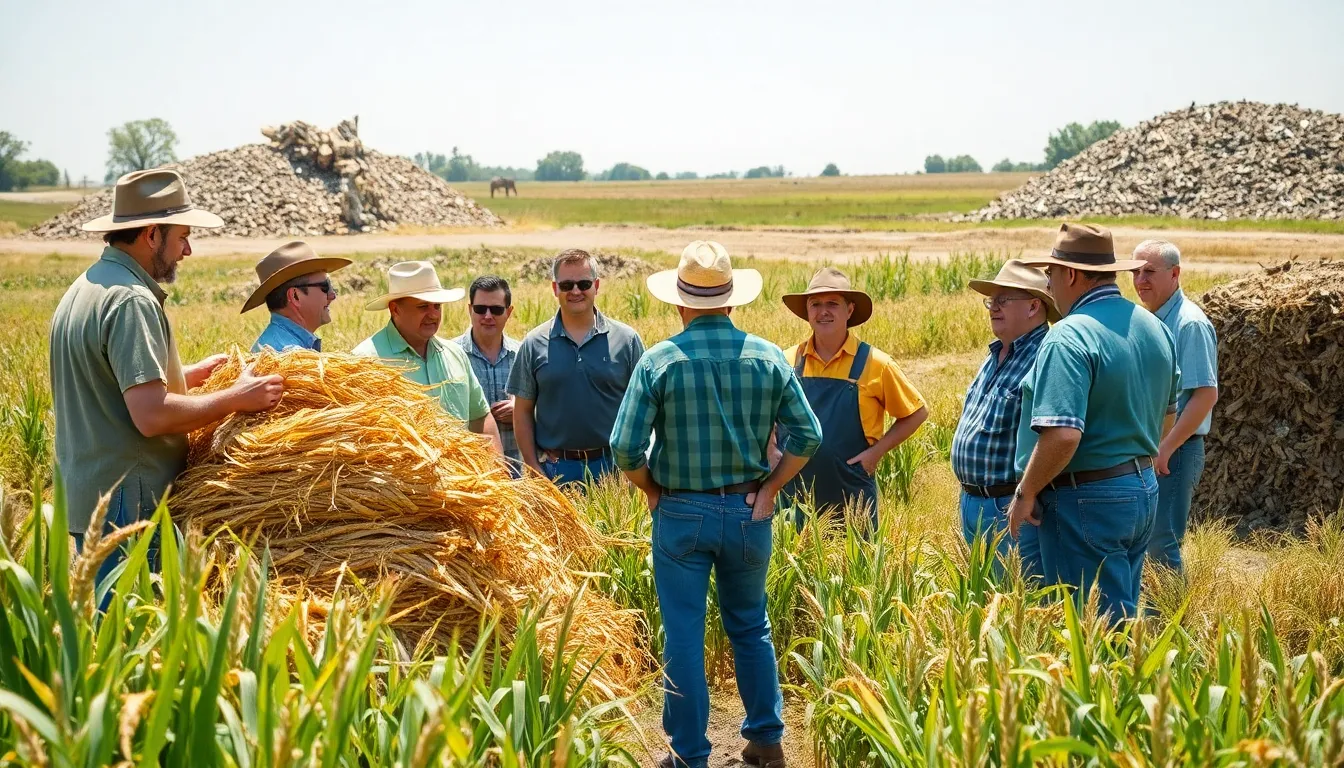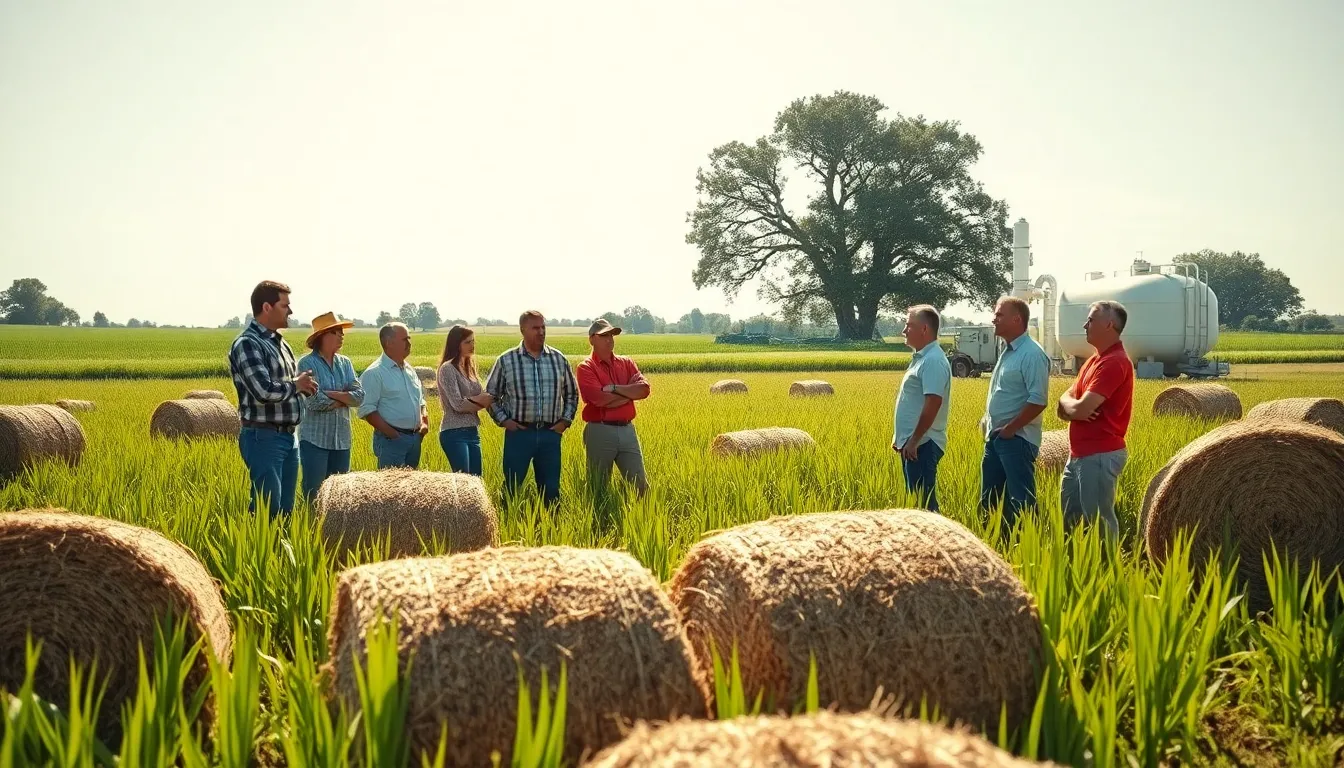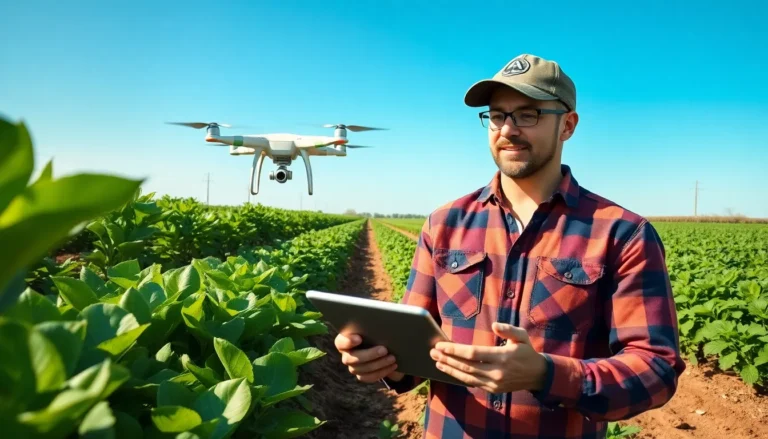Table of Contents
ToggleIn a world hungry for sustainable solutions, biomass energy emerges as a superhero in the renewable energy league. Imagine turning your kitchen scraps and yard waste into power—yes, it’s like magic, but with science! Biomass energy harnesses organic materials, transforming them into electricity and heat, all while reducing landfill waste.
Not only does this eco-friendly powerhouse help combat climate change, but it also offers a way to create jobs and boost local economies. Who knew that leftover pizza could be the key to a greener future? So buckle up as we dive into the fascinating world of biomass energy, where trash truly becomes treasure and every little bit counts in the quest for a cleaner planet.
Overview of Biomass Energy
Biomass energy stems from organic materials, including plant and animal matter. This renewable energy source converts waste into usable electricity and heat, creating a closed-loop system that benefits both the environment and the economy. Materials commonly utilized in biomass energy range from agricultural residues to forestry by-products, which contribute to resource efficiency.
Converting biomass into energy helps divert significant amounts of organic waste from landfills. By doing so, it reduces greenhouse gas emissions that occur during decomposition. In addition, biomass energy plays a crucial role in reducing reliance on fossil fuels, promoting a shift towards cleaner energy alternatives.
Recent data from the U.S. Energy Information Administration shows that biomass contributes over 5% of the total energy consumption in the United States. This figure indicates both its current importance and growth potential in the energy sector. The economic impact includes the creation of jobs within the biomass industry, which has surged with the increasing demand for sustainable energy solutions.
Effective biomass energy systems often integrate with existing waste management practices. For example, anaerobic digestion processes convert organic waste into biogas, which can then be used for heating or powering vehicles. This approach not only enhances energy recovery but also fosters local energy independence.
Biomass energy represents a versatile and sustainable solution for mitigating environmental challenges while stimulating economic growth. Its capacity to transform waste into energy demonstrates its potential as a key player in the renewable energy landscape.
Types of Biomass Energy

Biomass energy sources derive from various materials, each contributing uniquely to renewable energy production. Understanding these types enhances awareness of biomass’s role in sustainability.
Organic Materials
Organic materials include food waste, yard debris, and livestock manure. These materials can transform into energy through processes such as anaerobic digestion and fermentation. A significant benefit is the reduction of landfill waste. Converting organic waste into biogas helps lower greenhouse gas emissions. Utilizing local organic resources creates a sustainable cycle, promoting overall community health.
Agricultural Residues
Agricultural residues consist of crop leftovers, such as corn stalks and wheat straw. These byproducts often go unused, representing a potential energy source. Farmers can collect and convert leftover plants into biofuels, enhancing energy independence. Numerous studies indicate that using agricultural residues can significantly reduce emissions. Furthermore, utilizing these materials strengthens farm economies by diversifying income streams.
Wood and Forestry Products
Wood and forestry products include sawdust, wood chips, and tree limbs. These materials serve as primary sources of biomass energy. By leveraging wood waste, energy producers can create renewable heating solutions and electricity generation. New data shows that around 44% of biomass energy in the U.S. stems from wood products. Emphasizing the importance of sustainable forestry practices ensures a balance between energy production and ecosystem health.
Benefits of Biomass Energy
Biomass energy provides numerous benefits, making it a significant component in the renewable energy landscape. It converts organic waste into energy while promoting sustainability.
Renewable Resource
Biomass serves as a renewable energy source derived from organic materials. Crop residues, food waste, and forestry products continuously replenish, ensuring a steady supply. Unlike fossil fuels, biomass harnesses materials that regenerate naturally, reducing the reliance on finite resources. Therefore, utilizing biomass contributes to energy stability while minimizing environmental impact. Recent data shows biomass comprises over 5% of total energy consumption in the United States, highlighting its growing role in national energy strategies.
Carbon Neutrality
Biomass offers a unique advantage in carbon neutrality. This energy source emits carbon dioxide during combustion; however, the organic materials used absorb carbon while growing. That cycle creates overall balance, meaning biomass energy contributes less to atmospheric greenhouse gas concentrations. New research supports the notion that leveraging biomass can significantly decrease fossil fuel dependency, ultimately combating climate change. As a result, embracing this approach supports ecological health while delivering energy solutions.
Economic Advantages
Biomass energy presents substantial economic benefits. It fosters job creation through the development of biomass facilities and related sectors. This sector generates positions in areas like collection, processing, and distribution, stimulating local economies. Additionally, biomass can diversify farmers’ income through alternative revenue streams, such as producing energy crops and agricultural residues. According to recent statistics, investment in biomass technology could significantly enhance rural development while improving energy independence.
Challenges of Biomass Energy
Biomass energy, despite its advantages, faces notable challenges that impact its sustainability and efficiency.
Land Use Concerns
Land use represents a significant challenge in biomass energy production. Agricultural land often gets repurposed for energy crop cultivation, which could limit food production. Competing needs for land between food and energy sources raises important questions about priorities. Deforestation induced by biomass energy development risks damaging ecosystems and reducing biodiversity. It’s essential to balance biomass production with land conservation to ensure long-term sustainability.
Emissions and Pollution
Emissions and pollution provide another concern linked to biomass energy. While biomass combustion can be carbon neutral, it still releases particulates and other pollutants into the atmosphere. According to the Environmental Protection Agency, burning biomass can emit volatile organic compounds, which lead to air quality issues. This emission aspect warrants careful attention to minimize environmental impacts. Monitoring practices and adopting cleaner technologies can help mitigate these pollution effects and enhance overall efficiency.
Biomass energy stands as a promising alternative in the quest for sustainable energy solutions. By transforming organic waste into valuable resources, it not only addresses environmental concerns but also stimulates economic growth. The potential for job creation and energy independence makes biomass an attractive option for many communities.
While challenges exist regarding land use and emissions, the ongoing advancements in technology and sustainable practices can help mitigate these issues. As society continues to seek cleaner energy sources, biomass energy’s role will likely expand, paving the way for a greener and more resilient future. Embracing this renewable resource can contribute significantly to a healthier planet and a thriving economy.







